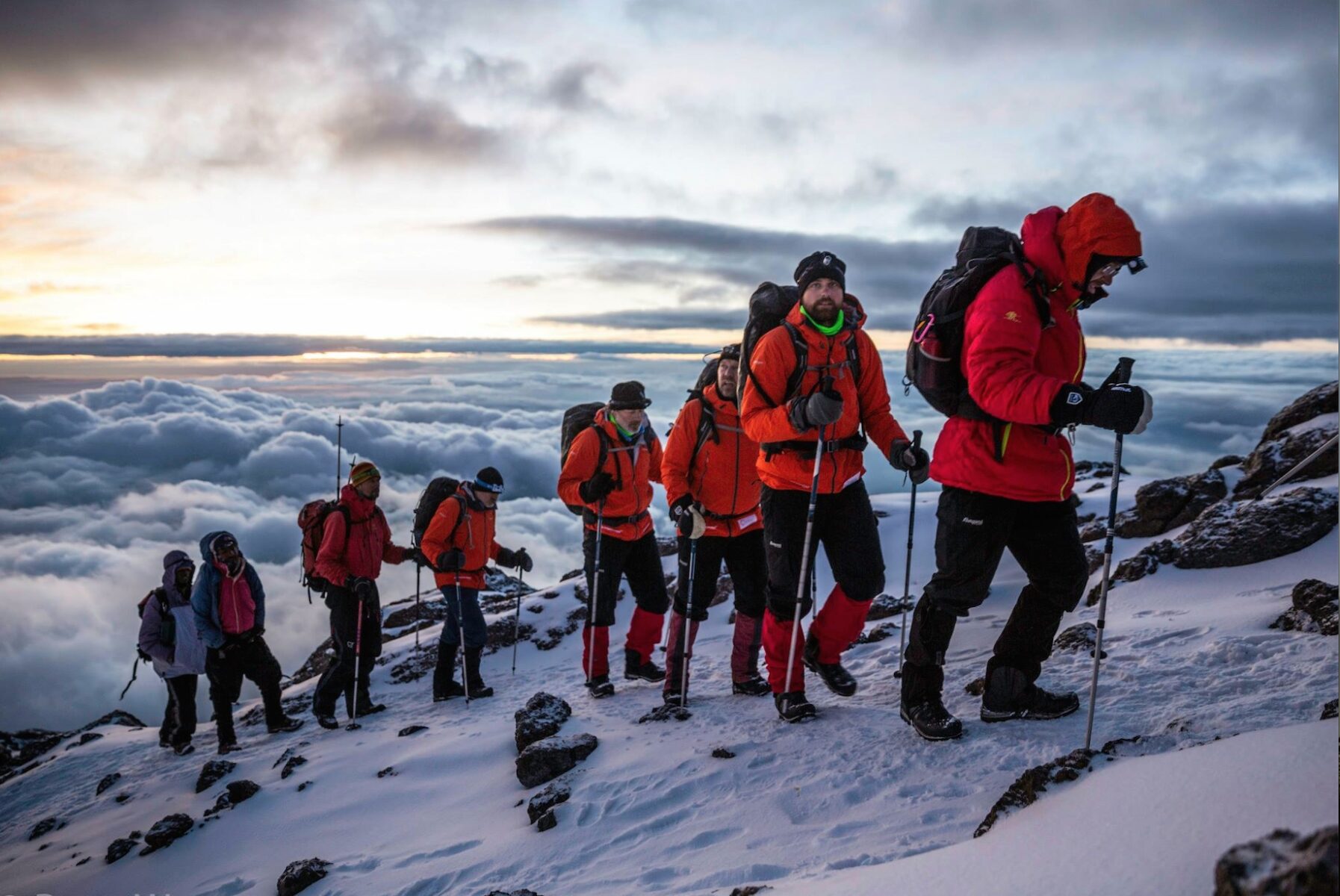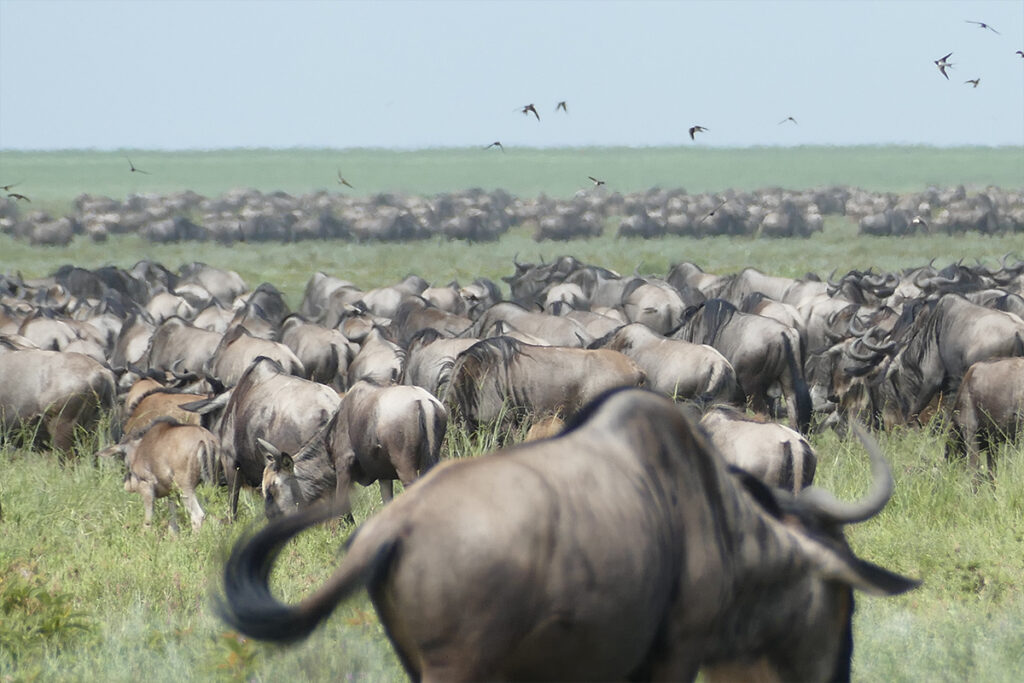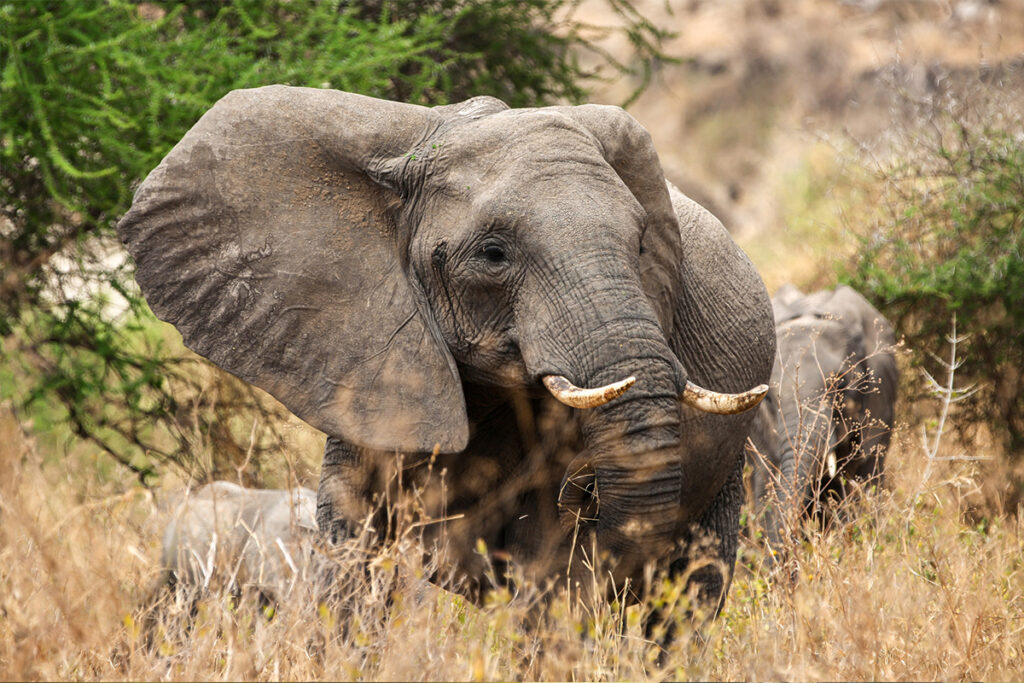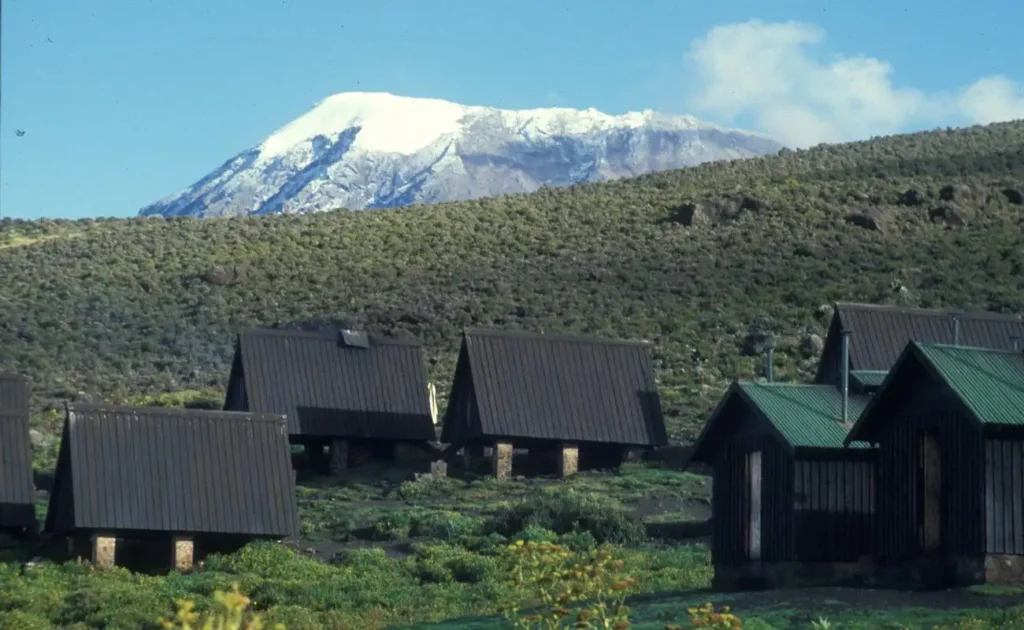On the roof of Africa, Mount Kilimanjaro stands majestically, attracting thousands of adventure-seekers each year. With its snow-capped peaks and diverse ecosystems, the challenge of climbing this Tanzanian giant is both a physical and mental feat. This trek is not only about reaching the summit but also about the incredible journey through varied landscapes, rich in biodiversity and culture.
Accompanying a climb with a safari experience introduces a contrasting yet complementary adventure. The Serengeti and Ngorongoro Crater offer a chance to witness the raw beauty of nature and wildlife, boasting one of the world’s largest concentrations of animals. Encompassing over 500,000 annual travelers, Tanzania’s blend of towering peaks and sprawling savannas provides an unparalleled exploration opportunity.

Overview of Mount Kilimanjaro
Mount Kilimanjaro, known as the “Roof of Africa,” is the tallest mountain on the continent. It stands at a towering height of 19,341 feet. Situated in Tanzania, it is a freestanding mountain made of three volcanic cones: Kibo, Mawenzi, and Shira. Each cone adds to the mountain’s unique landscape and offers various climbing routes. Climbers from all over the world come to tackle its heights and witness breathtaking views.
This majestic mountain boasts a rich history of exploration. Since the first recorded ascent in 1889, it has fascinated adventurers and scientists alike. The path to the summit offers diverse ecosystems, including rainforests, alpine deserts, and the Arctic-like summit. According to this post, some trekking routes aim to preserve these delicate environments. Eco-friendly routes help ensure that the mountain stays pristine for future trekkers.
For those planning an adventure, there are several routes to choose from. The routes vary in difficulty, scenery, and popularity. Climbers can select from routes like Marangu, Machame, and Lemosho. Each path provides a unique experience with its own set of challenges and rewards. Here is the article that shares recent updates for trekkers venturing to Mount Kilimanjaro in 2025 here is the article.
Organizing a climb requires careful preparation. Adequate gear ensures safety and comfort on the mountain. It’s important to acclimatize properly due to the high altitude. Trekkers should plan for a journey spanning several days to have the best chance of reaching the summit. Beyond the climb, immersing in the local culture adds depth and value to the entire experience.
Geographical Location and Features
Mount Kilimanjaro is located in Tanzania, near the northern border with Kenya. This majestic mountain is part of the Kilimanjaro National Park, a protected area known for its biodiversity. The mountain’s geographical coordinates are approximately 3.0674° S latitude and 37.3556° E longitude. Its towering presence makes it a significant landmark visible from miles away. This unique position contributes to its diverse climates and ecosystems.
Elevations on Mount Kilimanjaro range from lush lowlands to snowy peaks. There are five distinct climatic zones, each with its own set of characteristics. The zones include farmland, rainforest, heath, alpine desert, and an icy summit. Each zone transitions smoothly into the next as you ascend the mountain. These changes offer a variety of sights and experiences.
A table helps illustrate each zone’s approximate altitude:
| Climatic Zone | Altitude (feet) |
|---|---|
| Farmland | 2,600 – 6,000 |
| Rainforest | 6,000 – 9,200 |
| Heath | 9,200 – 13,200 |
| Alpine Desert | 13,200 – 16,500 |
| Summit | 16,500 – 19,341 |
Mount Kilimanjaro’s geology is remarkable due to its volcanic origin. The three volcanic cones, Kibo, Mawenzi, and Shira, offer varied terrains. Kibo is the highest and most famous, featuring the Uhuru Peak. Mawenzi boasts rugged cliffs, while Shira is mostly eroded. These features make Kilimanjaro a dream for any climber.
History of Climbing Mount Kilimanjaro
The history of climbing Mount Kilimanjaro is rich and fascinating. The first successful ascent to the summit was made in 1889. This achievement was accomplished by Hans Meyer, a German geographer, and Ludwig Purtscheller, an Austrian mountaineer. Their climb opened the door for adventurers worldwide. Since then, Kilimanjaro has become a symbol of challenge and triumph.
Over the years, the allure of Kilimanjaro has attracted many climbers with different goals. Some aim to break records, while others seek personal achievement. As a result, the mountain has seen climbers of all ages and nationalities. Organizations often sponsor climbs to raise awareness or funds for various causes. This has made Kilimanjaro a site of both athletic and charitable endeavors.
A timeline of significant climbs might include:
- 1889: First successful ascent by Hans Meyer and Ludwig Purtscheller.
- 1980s: Increased awareness leads to more organized climbs.
- 2009: First paraplegic climber reaches the summit.
- 2020: Sustainability efforts begin to reduce environmental impact.
Throughout history, climbing routes have adapted to meet the needs of adventurers. Advancements in gear and techniques have made the climb more accessible. With guided tours and improved safety measures, experienced and novice climbers alike can enjoy the adventure. The mountain’s enduring popularity reflects its status as a bucket-list destination. Every climb helps shape the ongoing story of Kilimanjaro.
Kilimanjaro Climbing Routes
Climbers have several routes to choose from when tackling Mount Kilimanjaro, each offering unique views and challenges. The Marangu Route, also known as the “Coca-Cola Route,” is a popular option. It is the only route with sleeping huts and has a reputation for being easier. However, its popularity means it is often crowded. Still, the comfortable accommodations appeal to many travelers.
Another favorite is the Machame Route, often called the “Whiskey Route.” This path is more challenging and steeper than Marangu but rewards climbers with stunning scenery. The landscapes include lush rainforests and rocky ridges. It’s less crowded and offers a more adventurous journey. Many experienced climbers prefer this route for its varied terrain.
For those seeking solitude, the Lemosho Route is ideal. It starts on the western side of the mountain and is known for its lower traffic. The route crosses beautiful, remote landscapes and provides more time for acclimatization. This makes it a good choice for beginners despite its longer duration. The added days improve the chances of reaching the summit.
A concise table can help compare these routes:
| Route | Duration (Days) | Difficulty |
|---|---|---|
| Marangu | 5-6 | Medium |
| Machame | 6-7 | Hard |
| Lemosho | 7-8 | Medium-Hard |
Each route offers a different experience, catering to various skill levels and preferences. The Rongai Route is the only trail approaching Kilimanjaro from the north. It is less scenic than others but quieter, making it another option for those wanting fewer crowds. Choosing the right route is crucial for ensuring a successful and enjoyable climb.
The Experience of Climbing Mount Kilimanjaro
Climbing Mount Kilimanjaro offers a mix of adventure and personal challenge. Every step leads you through diverse landscapes, each more captivating than the last. The journey starts in lush rainforests, where unique wildlife thrives. As you ascend, the scenery shifts to heaths and moorlands, creating a sense of wonder. This gradual change is a part of the magic that keeps climbers motivated.
As you climb higher, the air gets thinner, and the temperatures drop. This is the alpine desert zone, marked by its stark beauty and dramatic views. The lack of vegetation highlights the raw, unspoiled nature of the mountain. Reaching the summit involves perseverance and teamwork among climbers. Sharing stories and laughter with fellow adventurers becomes an integral part of the journey.
A typical daily routine while climbing includes:
- Wake up early for breakfast.
- Pack up camp and start trekking.
- Lunch break with scenic views.
- Continue hiking to the next camp.
- Evening rest and dinner under the stars.
Nearing the summit, Uhuru Peak, is both thrilling and challenging. The final ascent often takes place at night, aiming to reach the peak by sunrise. These early hours add to the excitement and anticipation. The reward is a stunning view of the world below and a sense of triumph. This experience is one that climbers cherish for a lifetime.
Aside from the physical achievement, the cultural connection enhances the experience. Interacting with local guides and porters offers insight into Tanzanian culture. Their expertise and warm spirit enrich the climb, creating memories beyond just the physical aspect. For many, the climb to Kilimanjaro’s peak is more than a journey; it’s a transformative experience.
Combining a Mount Kilimanjaro Climb with a Safari
For adventure seekers, combining a climb of Mount Kilimanjaro with a safari offers a perfect blend of thrill and wonder. After the demanding trek to Uhuru Peak, a safari provides a relaxing way to explore Tanzania’s natural beauty. The vast Serengeti and the Ngorongoro Crater are popular safari destinations. They host incredible wildlife, from lions and elephants to giraffes. Experiencing both Kilimanjaro and a safari makes for a truly diverse adventure.
The Serengeti is famous for its annual wildebeest migration. During this spectacle, millions of animals move across the plains. Witnessing this event is a highlight of any safari. The Ngorongoro Crater, with its unique landscape, is home to a wide array of species. These parks offer different views and experiences, enriching the overall journey.
A typical safari itinerary may include:
- Day 1: Travel from Kilimanjaro to the Serengeti.
- Day 2: Full-day game drive in the Serengeti.
- Day 3: Morning drive; transfer to Ngorongoro.
- Day 4: Explore Ngorongoro Crater.
- Day 5: Departure or further exploration.
Combining a climb with a safari requires careful planning to make the most of the experience. Tour packages often handle logistics, ensuring a seamless transition from mountain to safari. This allows adventurers to focus on enjoying their surroundings without stress. Accommodations range from luxury lodges to budget campsites, catering to various preferences. Balancing both elements results in an exceptional African journey.
The cultural aspect of the trip adds depth beyond the physical terrain. Visiting local villages and interacting with communities offer insights into Tanzanian life. These interactions often leave lasting impressions and add value to the adventure. Whether it’s meeting Maasai tribes or learning about conservation efforts, each encounter enriches the travel experience. Overall, combining Kilimanjaro and a safari delivers an unforgettable journey.
Essential Tips for Climbing Mount Kilimanjaro and Safari
Preparation is key when planning to climb Mount Kilimanjaro and go on a safari. Start by checking the best times of year for both activities. Kilimanjaro is best climbed during the dry seasons: January to mid-March and June to October. Safaris are often most rewarding during these periods as well, due to clear skies and good visibility. Ensure you book your trip well in advance to secure spots.
Proper gear makes all the difference in comfort and safety. Essential items include sturdy hiking boots, layered clothing, and a reliable backpack. Don’t forget sun protection, such as a hat and sunscreen. On safari, lightweight clothing in neutral colors is ideal. It helps you blend with the environment while keeping cool.
A table of necessary gear can help:
| Kilimanjaro Gear | Safari Gear |
|---|---|
| Hiking boots | Sunglasses |
| Layered clothing | Lightweight clothes |
| Backpack | Binoculars |
| Sun protection | Camera with zoom lens |
Your health is important; acclimatization reduces altitude sickness risks on the climb. Take it slow and stay hydrated throughout your journey. Pay attention to your body’s signals and rest if needed. For safaris, get any recommended vaccinations several weeks before departure.
Respect local customs and follow guidelines set by guides or park officials. Demonstrating respect ensures safety and enriches your experience through positive interactions with locals and wildlife alike. By considering these tips, you’ll be well-prepared for an unforgettable adventure combining both climbing Kilimanjaro and exploring Tanzania’s stunning landscapes on a safari.
Positive Impacts of Climbing Mount Kilimanjaro and Going on a Safari
Climbing Mount Kilimanjaro and going on a safari provide significant benefits to local communities. These activities create jobs for guides, porters, and staff in hotels and lodges. The income generated helps improve the quality of life for many Tanzanians. Also, the exposure to different cultures fosters mutual respect and understanding. Travelers often leave with a greater appreciation for the people they meet.
Environmental conservation is another positive impact. Fees collected from climbers and safari-goers fund the maintenance and protection of natural parks. This helps preserve the delicate ecosystems of Kilimanjaro and surrounding wildlife areas. Eco-friendly practices are encouraged to minimize harm to the environment. Efforts such as waste management and wildlife protection benefit both nature and visitors.
These adventures also inspire global awareness about conservation issues. When people witness the beauty of these natural wonders, they are more likely to support conservation efforts back home. The experience can be life-changing, motivating travelers to advocate for environmental causes. This ripple effect spreads the importance of protecting our planet’s treasures.
A list of positive impacts includes:
- Job creation and economic growth.
- Improved community welfare.
- Increased environmental protection.
- Enhanced cultural exchange.
- Boosted global conservation awareness.
Health benefits are also notable. The physical challenge of climbing encourages fitness and resilience. Engaging with nature provides mental wellness, reducing stress and promoting happiness. Safaris offer relaxation and a sense of wonder, allowing travelers to recharge away from urban life.
Lastly, both activities strengthen personal connections among family and friends. Shared experiences in breathtaking landscapes create lasting memories. These adventures often bring people closer together. Whether summiting Kilimanjaro or spotting wildlife, the bonds formed are truly special. All these impacts make climbing and safaris truly rewarding.

Frequently Asked Questions
Climbing Mount Kilimanjaro combined with a safari offers a thrilling adventure in Tanzania. Here, you can engage with diverse landscapes and rich wildlife, making it a truly memorable experience.
1. What is the best time of year to climb Mount Kilimanjaro?
The best times to climb Mount Kilimanjaro are during the dry seasons, from January to mid-March and June to October. These periods provide the most stable weather conditions, making the climb safer and more enjoyable.
Climbers can expect clear skies and magnificent views during these months. However, the mountain can be crowded during these peak times, so booking in advance is recommended to secure a spot.
2. How can climbers prepare physically for the Kilimanjaro trek?
To prepare physically for the trek, climbers should engage in regular cardio exercises like walking, jogging, or cycling. Building stamina and leg strength is essential, as the climb involves long hours of walking on varied terrain.
Hiking with a backpack simulates the actual trek and helps climbers acclimatize to carrying gear. Practicing on uneven ground will also improve balance and strength, vital for the journey.
3. What wildlife can travelers expect to see on a safari in Tanzania?
Tanzania is teeming with diverse wildlife, from the majestic Big Five—lions, leopards, elephants, buffaloes, and rhinos. Bird enthusiasts can spot exotic species like flamingos and vultures in the vibrant parks.
A safari often includes sightings of giraffes gracefully walking the plains and cheetahs sprinting across open fields. This incredible biodiversity makes Tanzania a top destination for wildlife enthusiasts.
4. Are there any cultural experiences travelers should not miss in Tanzania?
Visitors shouldn’t miss the chance to engage with the Maasai people, known for their rich cultural heritage. Maasai villages offer a glimpse into their fascinating traditions and unique way of life.
Traditional dances, vibrant markets, and learning about local crafts enrich the cultural experience further. These interactions provide insights into the daily lives and histories of the people living near Mount Kilimanjaro.
5. How does eco-tourism affect Mount Kilimanjaro and its surrounding areas?
Eco-tourism positively impacts Mount Kilimanjaro by promoting sustainable travel practices. Conservation efforts help preserve the mountain’s natural beauty and minimize environmental damage.
The involvement of local communities in eco-tourism initiatives ensures that tourism benefits both the environment and the people. These initiatives support environmental education and fund conservation projects, aiding long-term preservation.



